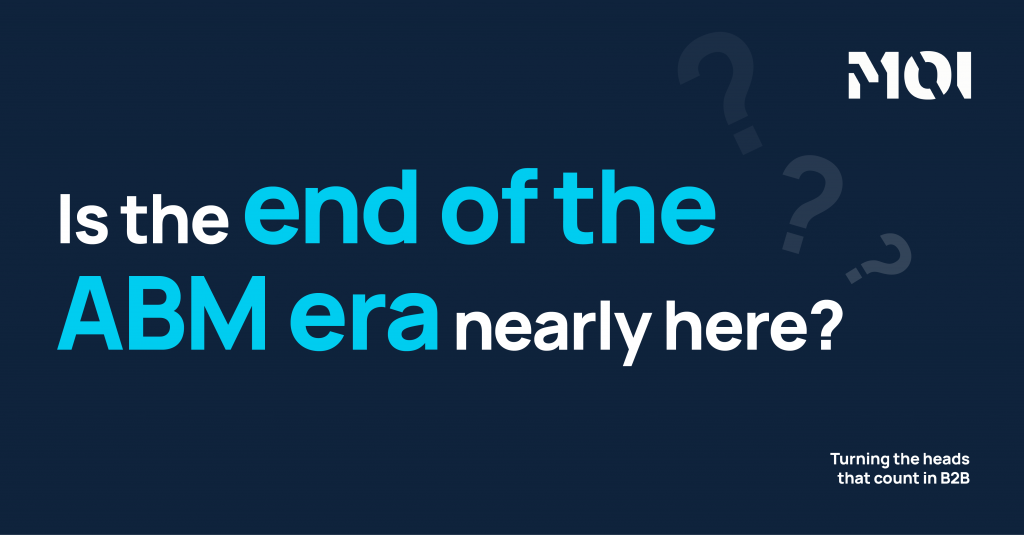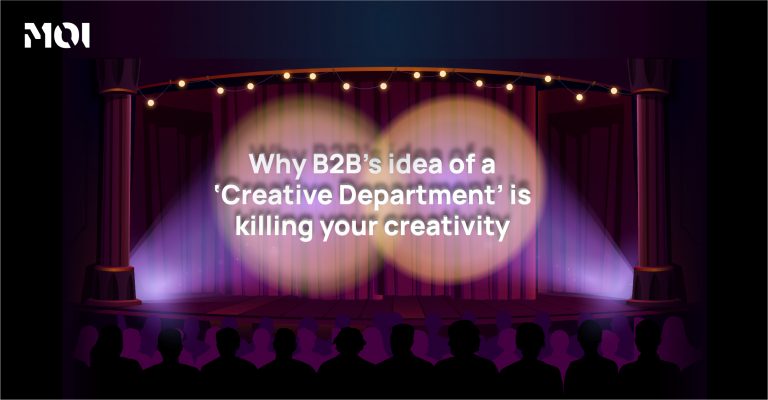
In 2018, I wrote an article about how account-based marketing (ABM) is really just data-driven marketing in a trench coat. Fast forward five years, and I think I was spot on.
The ABM wave has undoubtedly transformed how marketers engage with high-value clients; pushing our industry to focus more on the results that matter. And more personalised marketing, for that matter. We now know our customers better than before, and are perhaps even closer to Sales, too. It helped us move past the age of ‘spray and pray’ techniques and get smarter about where we put our marketing spend and attention.
But as hype for ABM dies down, it’s clear that ABM’s principles may not be as groundbreaking as we once thought. And what most organisations describe as ABM isn’t ABM at all—it’s just good marketing. It was a natural progression that didn’t require new processes, new teams, or new technology at times. And now, it’s the norm in B2B marketing.
ABM is an evolution, not a revolution
ABM has been the bridge between traditional marketing methods and a more refined, customer-centric approach. The things we thought were so revolutionary about ABM seem to be a progressive step toward the broader evolution of B2B marketing—one defined by effective engagement, getting creative with data, cultivating relationships, and focusing on the customer.
Here’s a challenge for any sceptics out there. Take a look at ITSMA’s 7 steps to developing an ABM framework and exclude a step you wouldn’t go through to build any GTM plan. You couldn’t—and that’s because any marketing programme starts with identifying a target market and building value propositions, and requires strong customer data and insights along with a stronger integration with Sales. The only difference? Whether you’re addressing a market of one or one thousand accounts.
Siloed ABM = a broken customer journey
If the goal is connecting customer experiences, pulling your most important accounts into a siloed team seems counterproductive. While it’s true they need special care and attention at the right time, a multi-year, multichannel, multi-stakeholder pursuit requires a joined-up approach to deliver consistent marketing across all facets of your GTM strategy.
That includes having a uniform brand image and value proposition—from your ABM campaign through to your website. The same goes for any channel or engagement experience that account has with you. As with sales and marketing integration, you need the same level of collaboration between your marketing departments, and especially with your ABM team. Otherwise, you’ll run the risk of showing your customers a split personality.
Enter the era of the customer
A new, post-ABM era is dawning. We’re beginning to realise that marketing needs to be built around delivering customer value above all else. This is mainly due to B2B brands having less control over the customer journey. Gone are the days of gating content because it’s the only way customers could get it. And gone are the days of generating tonnes of leads that take you nowhere.
It’s shown us that now is the time to rip up the lead gen rulebook. Today, to win you have to actually understand what makes you stand out, personalise experiences and make every interaction feel account-based. This new era will be where growth is based on delivering the most value to your customers. It will mean applying all the principles of account-based marketing to everything you do.
Now that you’ve heard my take on how ABM is just the new normal, how will you apply ABM’s principles, even as the B2B marketing landscape evolves? Let me know in the comments.
In the meantime, learn more about how we’re applying ABM to everything we do.


